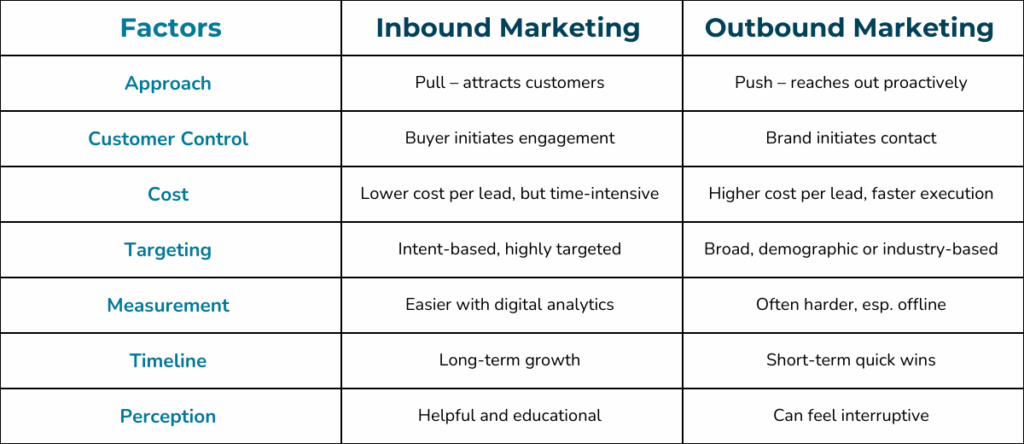Understanding the difference between inbound and outbound marketing is crucial for building an effective strategy that drives business growth. While inbound focuses on attracting customers through value-driven content, outbound proactively pushes messages to large audiences.
Knowing when and how to use each approach—and how to combine them—can significantly impact customer acquisition and long-term success.
Inbound marketing is a customer-centric approach that attracts potential buyers by offering helpful, educational, and relevant content. Instead of interrupting people, it draws them in naturally as they search for solutions online.
Research shows that 63% of consumers begin their shopping journey online, making inbound a powerful way to capture attention early in the buying cycle.
Outbound marketing is a proactive approach where businesses reach out to potential customers with promotional messages—whether or not they’ve expressed prior interest. It emphasizes broad visibility and quick impact.
Build targeted contact lists for outbound outreach in minutes.


Key takeaway: Inbound builds sustainable relationships; outbound delivers immediate reach.

The strongest marketing strategies combine inbound and outbound:
Insight: Inbound ROI is easier to measure digitally; outbound often requires blended attribution models.
Inbound vs. outbound is not an either-or choice. The most effective strategies combine both:
Together, they create a balanced, comprehensive approach that drives awareness, nurtures engagement, and converts prospects into loyal customers.
The right mix depends on your industry, audience, and growth goals—but consistency and integration across touchpoints is what truly drives success in 2025 and beyond.
Inbound attracts customers through helpful content, while outbound pushes promotional messages directly to audiences.
Neither is “better”—inbound is cost-effective and long-term, and outbound delivers faster results. The best strategy combines both.
Examples include SEO blogs, eBooks, webinars, and social media content that naturally draw people in.
Usually, 3–6 months for early results and 12–18 months for full momentum.
Yes, but they should use targeted methods like local ads, social media campaigns, or trade shows instead of costly mass advertising.
Both. Inbound educates informed buyers, while outbound reaches busy decision-makers. Many B2B firms use a mix with ABM.
Inbound is more cost-effective long-term, costing about 62% less per lead. Outbound delivers faster results but at higher acquisition costs.
Author
Access 120M+ verified business emails and grow your sales pipeline effortlessly.
Claim Your 200 Free Email Credits Today!